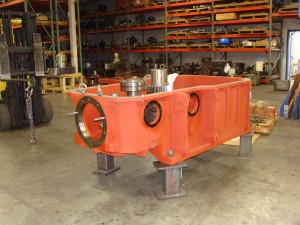 In our everyday lives, we are surrounded by technology that most of us don’t really understand. Gearbox reduction is a process that is used across many industries, in hundreds of products, yet few people would be able to spontaneously explain how it works. The following information aims to remedy that situation by explaining why gearbox reduction is important. It also presents a mathematics-based summary of how gearbox reduction works.
In our everyday lives, we are surrounded by technology that most of us don’t really understand. Gearbox reduction is a process that is used across many industries, in hundreds of products, yet few people would be able to spontaneously explain how it works. The following information aims to remedy that situation by explaining why gearbox reduction is important. It also presents a mathematics-based summary of how gearbox reduction works.
Reasons for Using a Falk Gear Reducer
At the most basic level, gearbox reduction allows designers and engineers to slow down the output of a motor. Why would an engineer want to reduce a motor’s power, you ask? Here are some of the most common reasons:
Reducing a motor’s output. Gearbox reduction is needed when the motor is just too powerful for the current application. The world of robotics provides one example of this situation. Even a small motor can deliver an output of 3,000 rotations per minute (RPM). If you were to hook up a robot with a 6-inch wheel to this motor, the robot would be moving at a rate of 54 miles per hour. (To find the speed of a wheel in miles per hour, you multiply the wheel’s diameter by the RPM and divide the result by the constant 336.1352.) This motor is just too powerful for this application. Similar situations may be found in many factories; a Falk Gear Reducer can help fix the problem of having too much power in a system.
Varying outputs within a system. Another situation that requires gearbox reduction is when you need to have variable outputs in the same system, according to the circumstances. For example, your car’s normal motor output is appropriate for the higher velocities you might reach on a highway. However, that same output is much too powerful for the lower speeds of city streets. The car’s transmission uses gearbox reduction to adjust the speed for the current driving conditions. A Falk Gear Reducer can serve the same purpose in an industrial setting.
How Gearbox Reduction Works
Now that we understand why gearbox reduction is important for mechanical engineers and other designers, let’s dive into the mathematics behind a Falk Gearbox, or any other speed reducer.
Gearbox reduction is based on the mathematics of gear ratios. A system that uses gear ratios pairs different sizes of wheels, belts, or chains and sprockets to shift motor output. At their most basic, all of these parts are circles.
Digging back into our grade school geometry lessons, we remember that circles contain different measurements. The diameter is the measurement across the middle of the circle; it’s like cutting a pie in half. The circumference is the measurement of the outside of the circle; when you drive around a roundabout, it is akin to driving the roundabout’s circumference. To find circumference, we multiply the diameter by pi, the constant 3.1415. (You might remember the equation circumference= 2 x pi x radius, which is effectively the same as diameter x pi.)
Now, to apply this equation to our quest to understand how a Falk gear reducer might work, imagine two wheels. One has a 4-inch diameter, and the other is twice as large, with an 8-inch diameter. Likewise, if we plug these diameters into the equation above, we find that the circumference of the smaller wheel is half the circumference of the larger wheel. This means that, assuming both wheels are spinning at the same rate, it would take the larger wheel twice as long to complete a full rotation as the smaller wheel. In other words, the smaller wheel spins twice in the amount of time it takes the larger wheel to spin once.
Gearbox reduction systems, such as a Falk gearbox, take advantage of this geometric property of circles by placing the two wheels (or gears) next to each other, so that the teeth of the smaller gear align with the teeth of the larger gear. Sticking with our example, if we had the power source linked to the 4-inch wheel, that wheel would spin around twice, turning the larger 8-inch wheel only once. The speed of the larger wheel would be half the input speed of the smaller wheel. We would say that this gear system has a gear reduction of 2:1, meaning that the engine’s output is cut in half by this simple gear ratio.
A factory Falk gear reducer probably wouldn’t be this simple – it might have dozens of gears lined up, reducing input speed by as much as 1000:1. Furthermore, there are many ways to line up gears to shift output. Still, now that you understand gear ratios, you have a basic concept of how a gearbox reduction system works.
Posted under Machinery Maintenance on Thursday, July 28th, 2011
